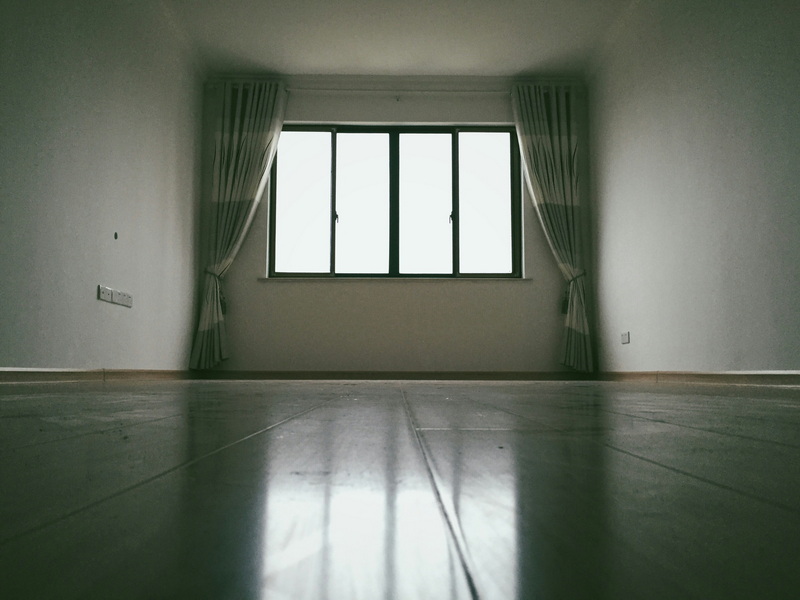English 




Views: 222 Author: Astin Publish Time: 2025-02-12 Origin: Site



Content Menu
● Why Replace Aluminum Windows with Vinyl Windows?
>> Durability
● Assessing Your Needs and Budget
>> Budget
● Preparing for the Replacement
>> Measuring the Window Openings
>> Gathering the Necessary Tools and Materials
● Step-by-Step Guide to Replacing Aluminum Windows with Vinyl Windows
>> Step 1: Removing the Old Aluminum Windows
>> Step 2: Preparing the Window Opening
>> Step 3: Installing the New Vinyl Windows
>> Step 4: Sealing and Insulating the Window
● Hiring Professional Installers
>> Benefits of Hiring Professionals:
● Maintaining Your Vinyl Windows
● Pros and Cons of Aluminum Windows
>> Advantages:
● Pros and Cons of Vinyl Windows
>> Advantages:
● FAQ
>> Q1: How long do vinyl windows last?
>> Q2: Are vinyl windows more energy-efficient than aluminum windows?
>> Q3: Can I install vinyl windows myself?
>> Q4: How do I clean vinyl windows?
>> Q5: What are the benefits of hiring professional window installers?
Replacing aluminum windows with vinyl windows is a popular home improvement project that can enhance your home's energy efficiency, aesthetics, and overall value. Aluminum windows, commonly found in older homes, are not as energy-efficient as their vinyl counterparts. Vinyl windows have gained popularity in recent years due to their durability, low maintenance, and excellent insulation properties. This comprehensive guide will walk you through the process of replacing aluminum windows with vinyl windows, covering everything from preparation to installation and maintenance.

Before diving into the replacement process, it's essential to understand the benefits of switching from aluminum to vinyl windows. Here are some compelling reasons to consider this upgrade:
Vinyl windows offer superior insulation compared to aluminum windows. The PVC frames used in vinyl windows provide excellent thermal resistance, reducing heat transfer in both summer and winter. This can lead to significant savings on your heating and cooling bills.
Vinyl windows are known for their low maintenance requirements. Unlike aluminum, vinyl doesn't rot, peel, or fade. This means you won't have to worry about frequent painting or staining to keep your windows looking their best.
Vinyl windows are highly durable and resistant to various weather elements. They don't corrode or warp, ensuring they maintain their structural integrity over time. While aluminum is stronger, it is more prone to dents and scratches, which are more visible than on vinyl.
Vinyl windows come in a wide range of styles and colors to match your home's aesthetic. Whether you prefer a classic or modern look, you can find vinyl windows that complement your home's overall appearance.
While aluminum windows may have a lower upfront cost in some cases, vinyl windows offer better long-term value due to their energy efficiency and low maintenance. The savings on energy bills and reduced maintenance costs can offset the initial investment over time.
Before starting the replacement project, it's crucial to assess your specific needs and budget. Consider the following factors:
Determine how many windows need replacement. Replacing all windows at once can provide a consistent look and maximize energy savings, but it also requires a larger initial investment.
Decide on the level of energy efficiency you want to achieve. Look for windows with features like argon or krypton gas between the panes and low-E coatings on the glass to enhance insulation.
Choose a style and design that complements your home's architecture. Consider factors like window type (e.g., double-hung, casement, sliding), frame color, and hardware finishes.
Set a realistic budget for the project, including the cost of windows, installation, and any necessary repairs. Get quotes from multiple contractors to compare prices and services.
Once you have a clear understanding of your needs and budget, you can start preparing for the replacement process. Here are the essential steps:
Accurate measurements are crucial for ensuring a proper fit. Measure the width and height of each window opening from the inside, taking multiple measurements to account for any variations.
Order your new vinyl windows based on the measurements you've taken. It's best to have the windows custom-sized to fit each existing window opening for a seamless installation.
Collect all the tools and materials you'll need for the project. This may include:
- Utility knife
- Screwdrivers
- Hammer
- Chisel
- Level
- Square
- Shims
- Caulk
- Insulation materials
- Safety glasses
- Gloves
Clear the area around the windows, both inside and outside the house. Cover furniture and floors to protect them from dust and debris.

Here's a detailed step-by-step guide to replacing your aluminum windows with vinyl windows:
1. Use a utility knife to cut through the caulking and paint around the perimeter of the windows, both inside and outside the house. This will make removal easier and minimize damage to the trim.
2. Remove any screws holding the windows to the flange.
3. Tap the frame around the windows with a block of wood from the inside to push them out of the opening, being careful not to break the glass.
4. Once the windows have been removed, use a hammer and chisel to remove the metal flange around the openings.
1. Clean the window opening thoroughly, removing any debris, old caulk, or nails.
2. Inspect the surrounding wood for rot or damage and repair as needed.
3. Ensure the opening is square, level, and plumb. Use shims to make adjustments if necessary.
1. Carefully place the new vinyl window into the opening.
2. Use a level, square, and shims to ensure the window is plumb, square, and level.
3. Drive screws through the window casing into the framing around the opening to secure the new window.
1. Fill any gaps between the window and the surrounding frame with insulation materials. This will help improve energy efficiency and prevent air leaks.
2. Apply caulk around the perimeter of the window to seal any remaining gaps. This will protect against water damage and further enhance insulation.
1. Install trim between the window and the opening to cover any gaps and provide a finished look.
2. Clean the window and surrounding area.
3. Test the window to ensure it opens and closes smoothly.
While it's possible to replace aluminum windows with vinyl windows yourself, hiring professional installers is often recommended. Professional installers have the experience and expertise to ensure a proper and secure installation. They can also handle any unexpected issues that may arise during the process.
- Proper Installation: Professionals will ensure the windows are level, plumb, and square for a proper fit.
- Efficiency: Professionals can complete the job quickly and efficiently, minimizing disruption to your home.
- Warranty: Many professional installers offer warranties on their work, providing peace of mind.
Once your new vinyl windows are installed, proper maintenance is essential to keep them looking and functioning their best. Here are some tips for maintaining your vinyl windows:
- Clean the windows regularly with a mild soap and water solution.
- Inspect the windows for any signs of damage, such as cracks or leaks.
- Caulk around the windows as needed to maintain a tight seal.
- Lubricate the moving parts of the windows to ensure smooth operation.
To make an informed decision, it's essential to understand the pros and cons of both aluminum and vinyl windows. Here's a summary of the advantages and disadvantages of aluminum windows:
- Durability: Aluminum windows are known for their strength and resistance to weather elements.
- Low Maintenance: Aluminum windows require minimal upkeep.
- Sleek Appearance: Aluminum windows offer a modern and stylish look.
- Poor Insulation: Aluminum windows have poor insulation properties, leading to higher energy costs.
- Higher Upfront Cost: Aluminum windows can be more expensive than vinyl windows initially.
- Prone to Dents and Scratches: Aluminum is a softer material, making it susceptible to dents and scratches.
Here's a summary of the advantages and disadvantages of vinyl windows:
- Energy Efficiency: Vinyl windows offer excellent insulation, reducing energy bills.
- Low Maintenance: Vinyl windows are resistant to rot and fading.
- Variety: Vinyl windows come in a wide range of styles and colors.
- Cost-Effective: Vinyl windows offer better long-term value due to energy savings and low maintenance.
- Less Structural Support: Vinyl provides less overall structural support compared to aluminum.
- May Not Be Suitable for Extreme Climates: Vinyl windows may not perform as well as aluminum windows in extreme heat or cold.
Replacing aluminum windows with vinyl windows is a worthwhile investment that can improve your home's energy efficiency, aesthetics, and value. While the installation process requires careful preparation and attention to detail, the benefits of vinyl windows make them a popular choice for homeowners. Whether you choose to DIY or hire professional installers, upgrading to vinyl windows can significantly enhance your home's comfort and curb appeal. By understanding the key features, pros and cons, cost comparison, and maintenance requirements of both aluminum and vinyl windows, you can make an informed choice that suits your home and lifestyle.

Vinyl windows can last between 30 to 40 years with proper care and maintenance.
Yes, vinyl windows are generally more energy-efficient due to their superior insulation properties.
Yes, you can install vinyl windows yourself if you have the necessary skills and tools. However, hiring professional installers is recommended to ensure a proper and secure installation.
Clean vinyl windows regularly with a mild soap and water solution. Avoid using abrasive cleaners or solvents that can damage the vinyl.
Professional window installers can ensure a proper installation, handle any unexpected issues, and offer warranties on their work.
[1] https://todayshomeowner.com/windows/video/how-to-replace-aluminum-windows-with-vinyl-windows-on-your-home/
[2] https://windowrama.com/blog/wood-vinyl-aluminum-windows-differences/
[3] https://windowdepotdallas.com/blog/can-you-replace-aluminum-windows-with-vinyl-windows
[4] https://www.fixr.com/articles/vinyl-vs-aluminum-windows
[5] https://windowdepotnashville.com/can-you-replace-aluminum-windows-with-vinyl-windows/
[6] https://www.windowscanada.com/whitepages/aluminum-vs-vinyl-windows.html
[7] https://www.youtube.com/watch?v=9mhn9CDCY_k
[8] https://paradigmwindows.com/vinyl-vs-aluminum-windows/
[9] https://advancedwindowsusa.com/vinyl-or-aluminum-windows-which-is-better
[10] https://www.bobvila.com/articles/vinyl-vs-aluminum-windows/
[11] https://todayshomeowner.com/windows/guides/vinyl-vs-aluminum-windows/
Top Aluminum Furnitures Manufacturers and Suppliers in Czech Republic
Top Aluminum Furnitures Manufacturers and Suppliers in Poland
Top Aluminum Furnitures Manufacturers and Suppliers in Belgium
Top Aluminum Furnitures Manufacturers and Suppliers in Finland
Top Aluminum Furnitures Manufacturers and Suppliers in Denmark
Top Aluminum Furnitures Manufacturers and Suppliers in Greece
Top Aluminum Furnitures Manufacturers and Suppliers in Portugal
Top Aluminum Furnitures Manufacturers and Suppliers in Austria
Top Aluminum Furnitures Manufacturers and Suppliers in Norway
Top Aluminum Furnitures Manufacturers and Suppliers in Sweden
